Quality and Safety
The rise of Guerra
The Guerra name is well-known and respected on the Brazilian and South American markets, associated by consumers with security, tradition, respect, robustness, and technology.
Such excellence, however, was not achieved overnight. It began in 1885, when Prosdócimo Guerra took his wife and sons, Francesco and Vicenzo, from Italy to the Americas. He chose Brazil instead of the United States - more specifically, nearby the municipality of Veranópolis, in Rio Grande do Sul state.
The entrepreneurial spirit took hold of Vicenzo, who became a respected businessman, helping, among other things, to settle what was to become Nova Alvorada.
In the first half of the twentieth century, Vicenzo's nephew, Prosdócimo Guerra (grandson of the first Prosdócimo) became a prominent businessman in the state, introducing innovations he discovered on his trips to São Paulo - which at the time took days because of the poor roads. He set up the first telephone line in the region, was the first driver to be licensed there, and owned the only truck in the area, providing services to the community - often without charge.
In the early 1950s, Prosdócimo Guerra decided it was time for a change, and he took his family to Pato Branco, in southwestern Paraná, so beginning a new phase of achievements.
In the town he helped found, he went on to apply his bold, entrepreneurial vision in agribusiness, making Guerra one of the largest business groups in the state.
The growth of our business
The Guerra family was one of the first to invest in growing soybeans, in 1979 founding Sementes Guerra. Their knowledge allowed them to produce superior quality soybean and wheat seeds, making the company one of the pillars of the family business.
In the following years, Sementes Guerra quickly gained market share and recognition among farmers. By the late 1990s, the company had several units around the state of Paraná and produced soybean, wheat and corn hybrid seeds of a high technological standard.
In the early years of the twenty-first century, the Guerra Group has been developing new seeds, improving its management processes, investing heavily in the brand - sponsoring Coritiba Football Club, in the Brazilian Championship. In 2006 it founded the Prosdócimo Guerra Institute (IPG), to promote the development of society. At its headquarters, IPG’s qualified teachersserve more than 4,000 families, offering quality, free courses.
Since 2005, Sementes Guerra has been included in the Brazilian Agribusiness yearbook, published by Globo Rural magazine, listed as one of the best companies in the Brazilian agribusiness sector.
In 2011, the group merged with France's Limagrain, to create Limagrain Guerra do Brasil S.A., operating in hybrid maize and sorghum seeds. Sementes Guerra continues to work with soybean and wheat seeds, also exporting cereals. With units in the southwest of Paraná, it trades soybeans, maize, wheat and beans.
In 2012, the two companies brought one of the most famous and prestigious brands in European baking, Jacquet, to Brazil. Jacquet Guerra Brasil S.A. has one of the most modern cake and cookie plants in Latin America, and is expanding its activities in Brazil.
In 2013, the Group opened a new central office in Pato Branco at the "Reta Grande Industrial Park". With a 300,000 m² floor area, the site is home to the headquarters, research center and laboratory, cereal storage unit, and one of the most modern Industrial Seed Treatment (IST) and Seed Processing Units (SPU) in Brazil, with a production capacity of 1,000,000 bags of soybeans and wheat a year.
In 2014, the Group founded SG Empreendimentos Ltda., which manages the company's property investments.
The Guerra Group now operates in several different segments, including livestock farming, owning land in the South, North and Northeast regions of Brazil. It receives and exports cereals and trades agricultural implements. It produces soybean and wheat seeds, with a leading brand in Brazil. Through Jacquet Guerra Brasil S.A. it operates in food. It also does research and trades in the dairy sector, with the French group Senoble (one of Europe's biggest conglomerates in the segment), and it operates in the cereal ingredients sector, being the exclusive distributor of Biolice, a biodegradable and compostable maize-based plastic resin made by French company Limagrain Cereales Ingrédients. The Guerra Group also operates in communications, under the Itapuã AM brand, and in real estate, with a focus on commercial properties in Brazil's state capitals.
And so it is, with respect for its history, the land and the community, honoring the pillars on which it was founded in 1885, that the Guerra Group will continue to move forward, helping to develop agribusiness in Brazil.
Our history in pictures
-
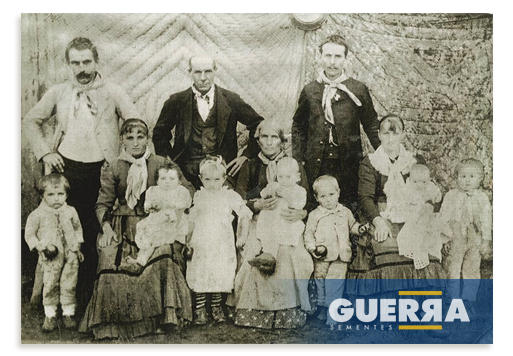
1885
The Guerra family arrived in Brazil from Italy, settling in Rio Grande do Sul, where they begin subsistence farming.
-
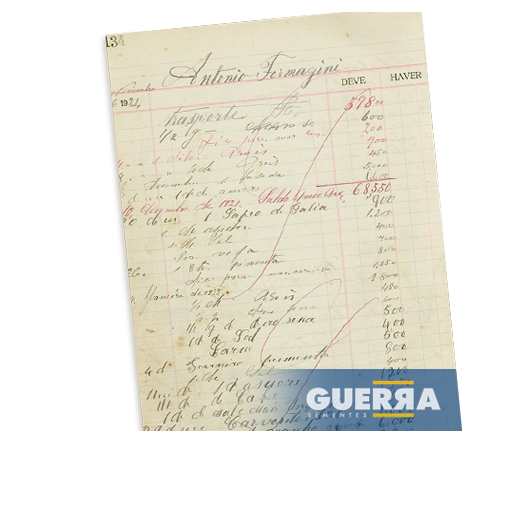
1921
The ledger from Vicenzo Guerra's Casa de Comércio, in Rio Grande do Sul.
-

1929
In the Guerra Village (which is now Nova Alvorada), Prosdócimo Guerra (grandson of the first Prosdócimo Guerra) founded Casa de Comércio Irmãos Guerra.
-
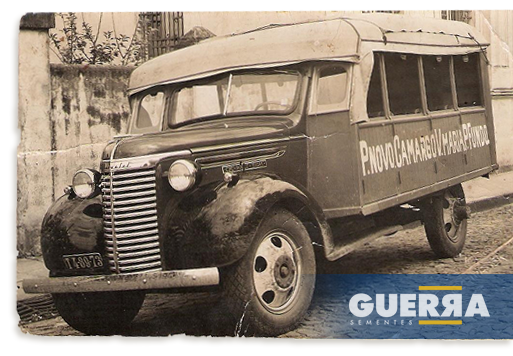
1930
Prosdócimo Guerra buys his first truck and becomes the first licensed driver, bringing the region closer together.
-
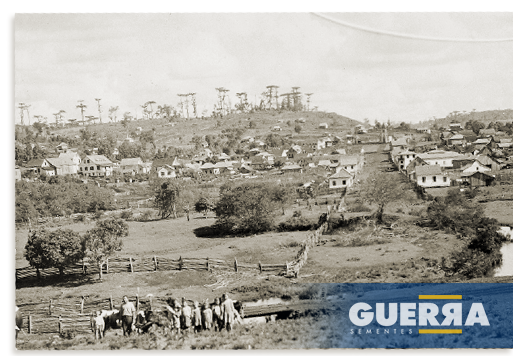
1954
Pato Branco at the time when the Guerra family arrived in Paraná.
-

1960
Irmãos Guerra become industrial loggers in Paraná and help drive the region forward.
-
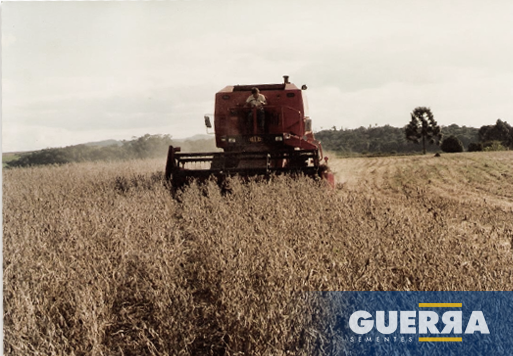
1969
The Guerra family pioneers in soybean farming in southwestern Paraná.
-
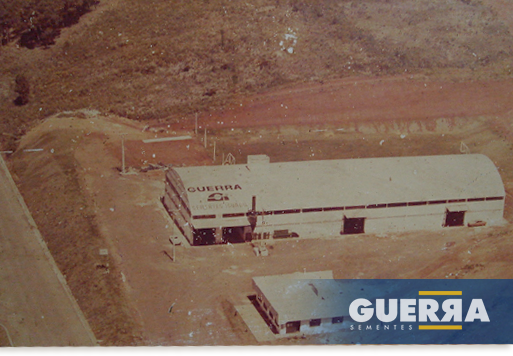
1979
Foundation of Sementes Guerra Ltda.
-

1979
Prosdócimo Guerra at Fazenda Rio Santana.
-

1994
Construction of the first branch in the city of Vitorino.
-
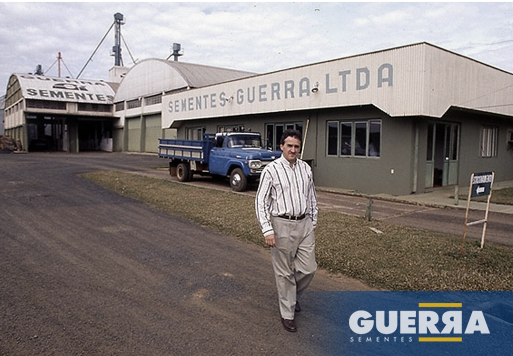
1994
The founder and president of Sementes Guerra, Fernando Guerra, starts production of hybrid maize seeds under the SG brand.
-
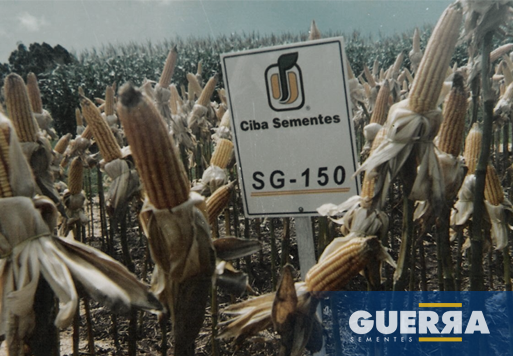
1995
In partnership with Ciba Seeds (now Syngenta Seeds), Sementes Guerra launches hybrid maize SG 150, which would be on the market for almost 20 years.
-

1995
The first SG 150 field at Rio Poço Preto farm, belonging to the Guerra Group.
-
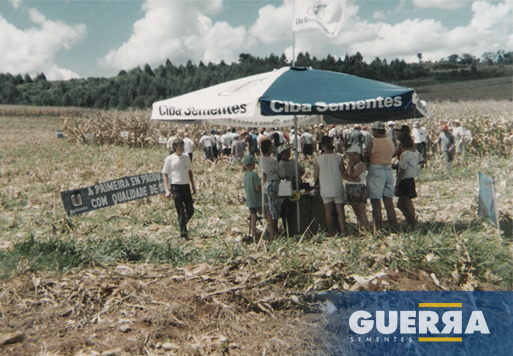
1995
The company's first field day for hybrid maize seeds (tent loaned by Ciba Sementes).
-

1996
Former headquarters of Sementes Guerra (1979-2013).
-

1997
Sementes Guerra purchasing unit in Bom Sucesso do Sul.
-
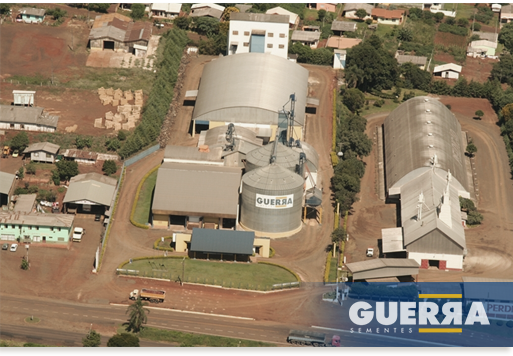
1997
Sementes Guerra invests in its second unit in Pato Branco, establishing itself at the two main entrances to the city.
-
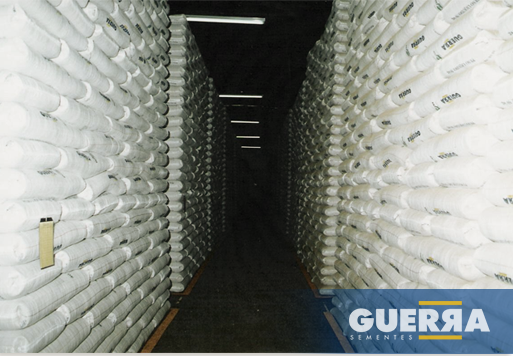
1998
Production of soybean seeds increases significantly with the new Seed Processing Unit in Pato Branco.
-
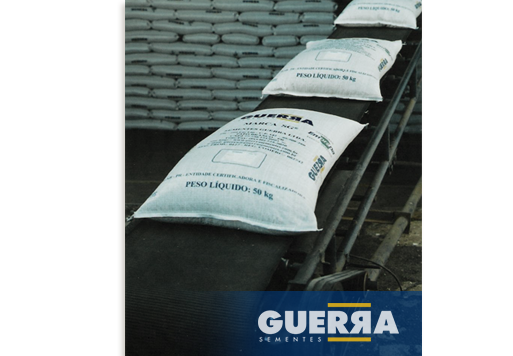
1998
The embedment model in the 1990s.
-

1999
Fernando Guerra in a field day on the Guerra Group farm.
-
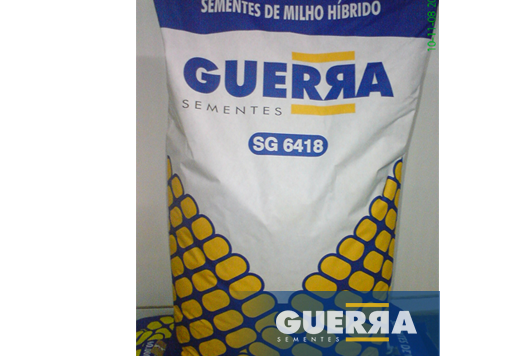
2000
Launch of hybrid maize SG 6418, which was to sell over 1.5 million bags.
-

2000
Hybrid maize seeds production grows and the company earns national respect.
-

2001
The Guerra Group Agricultural Division assumes a leading position in the state, being the only one to own land in southwestern Paraná producing seeds for three species.
-
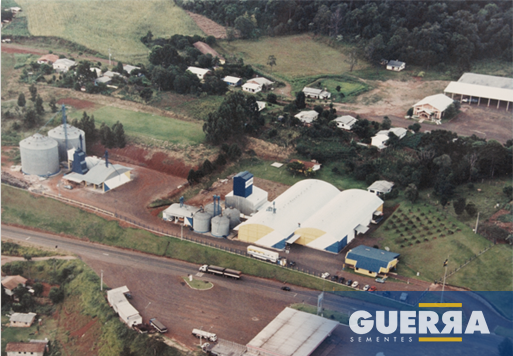
2003
The old Guerra Group headquarters.
-
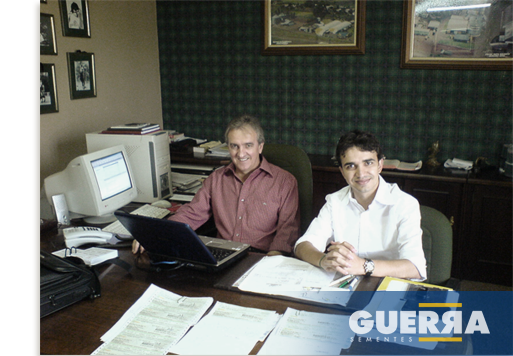
2003
Ricardo Guerra takes over as executive director of the Guerra Group.
-

2005
Sementes Guerra becomes one of the market leaders in Rio Grande do Sul, the state where the family began in Brazil.
-

2005
One of the segment leaders.
-

2006
The company invests heavily in field days throughout Brazil.
-

2006
Foundation of the Prosdócimo Guerra Institute (IPG), the Guerra Group's social effort.
-

2007
Guerra Group's Communications Division gets a new headquarters.
-
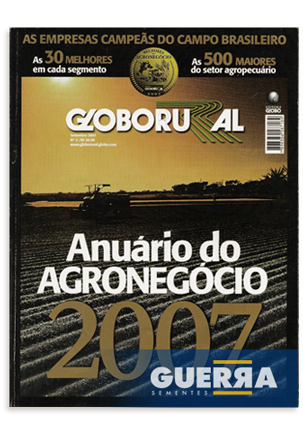
2007
The company remains a reference in the sector.
-

2007
Sementes Guerra launches its first simple maize hybrid, SG-6011.
-
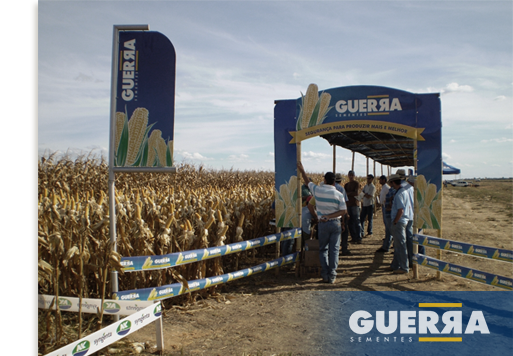
2007
Event in Mato Grosso.
-

2008
The company establishes itself as one of the most important seed producers in Brazil.
-
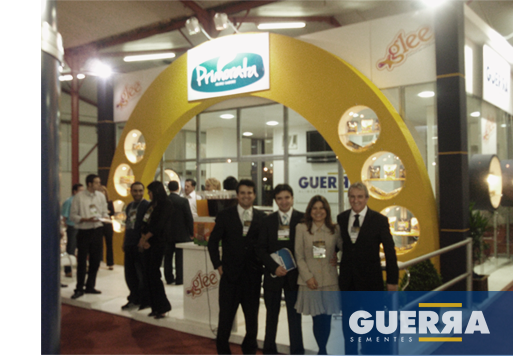
2008
The Guerra family founds Primorata (food division), which would later become part of the Jacquet Guerra Brasil SA.
-
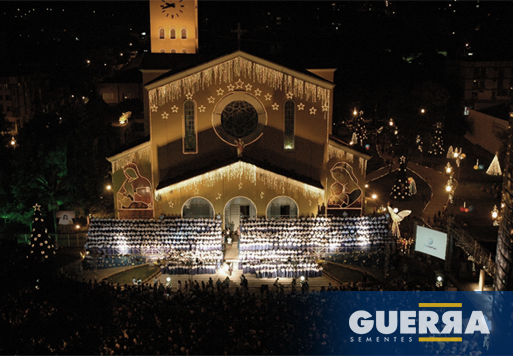
2008
1000 voice choir at the Prosdócimo Guerra Institute at Christmas in Pato Branco.
-
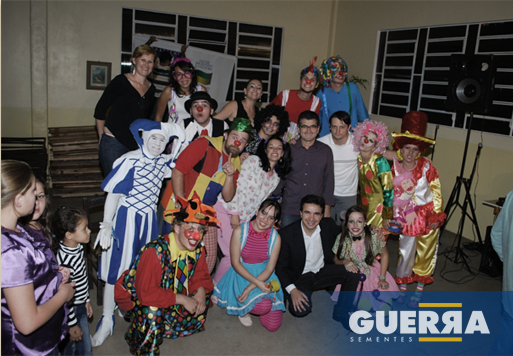
2008
Prosdócimo Guerra Institute begins working with the Rouanet Law, expanding into new workshops.
-
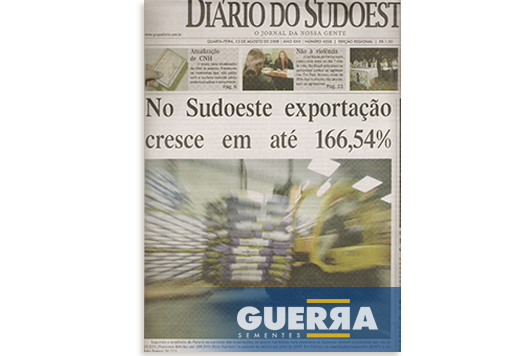
2008
Maize seeds produced by Sementes Guerra become the main product exported from Pato Branco.
-

2009
Sementes Guerra opens one of the largest private cold storage rooms for seeds in Brazil.
-
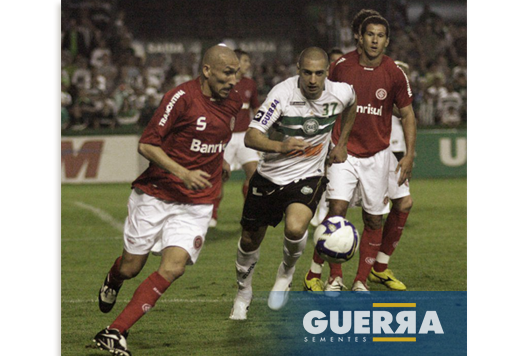
2009
Sementes Guerra invests in the brand and becomes the first company in Paraná state to sponsor a club in the first division of the Brazilian Soccer Championship.
-
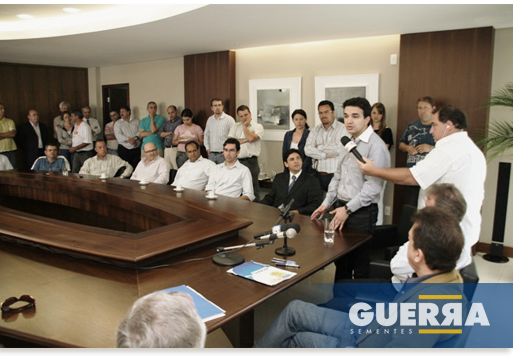
2009
Guerra Group announces on November 23th the construction of a food factory in Guarapuava (Paraná).
-
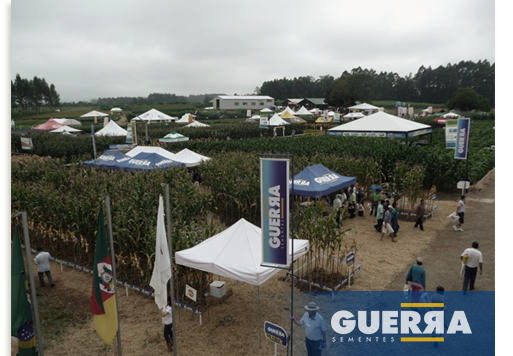
2009
Event in Rio Grande do Sul.
-

2009
Logo commemorating the 30th anniversary of Sementes Guerra.
-

2010
Construction of the plant in Guarapuava.
-
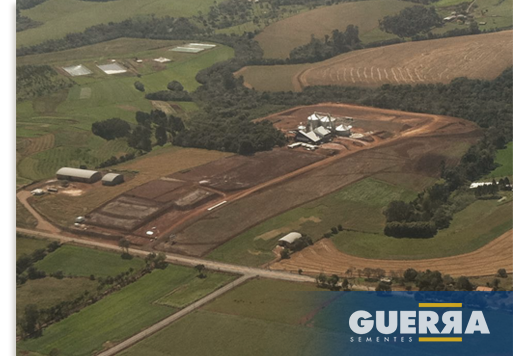
2010
Sementes Guerra buys 320,000 m² in Reta Grande, Pato Branco.
-
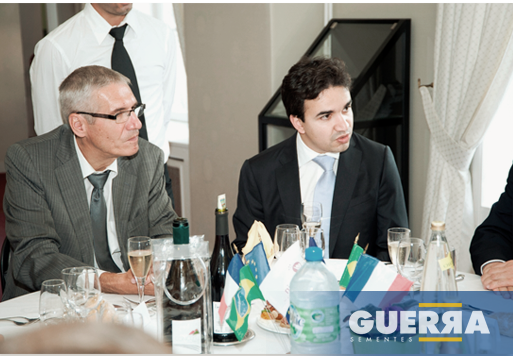
2010
Opening of negotiations between Limagrain and Guerra groups to create a new company in Brazil.
-

2010
Prosdócimo Guerra Institute and Theóphilo Petrycoski Institute begin an orchestra.
-

2011
Communication to the market on February 10 about the creation of the company Limagrain Guerra do Brasil SA.
-
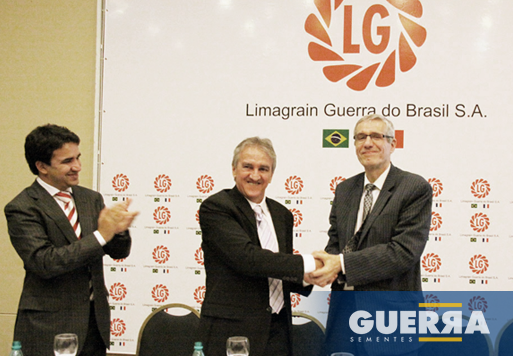
2011
Ricardo Guerra applauds the handshake between Fernando Guerra and Frenchman, Daniel Cheron, director of the Limagrain Group.
-

2011
Investments in marketing continue and Limagrain Guerra do Brasil SA sponsors Coritiba soccer club for two seasons.
-

2012
In August, the Limagrain and Guerra Groups announce their interest in Pato Branco to investing in the maize-based biopolymers segment.
-
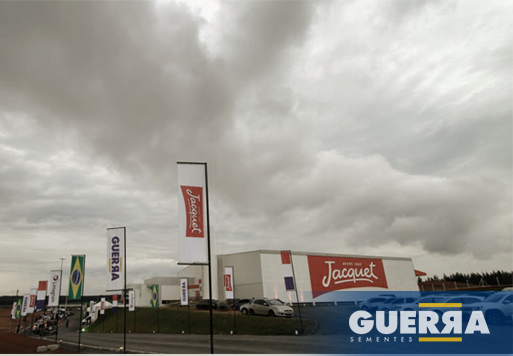
2012
Opening of Jacquet Guerra Brasil SA, on November 9.
-
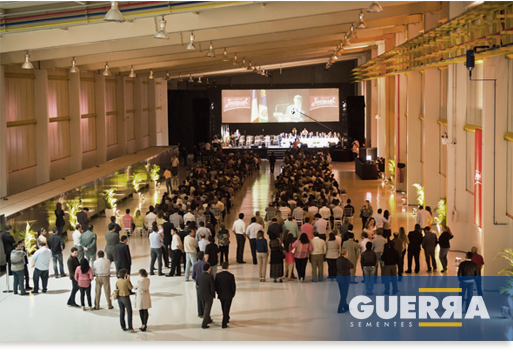
2012
Launch of Jacquet Guerra Brasil SA.
-

2012
Launch of Jacquet Guerra Brasil SA in Guarapuava.
-
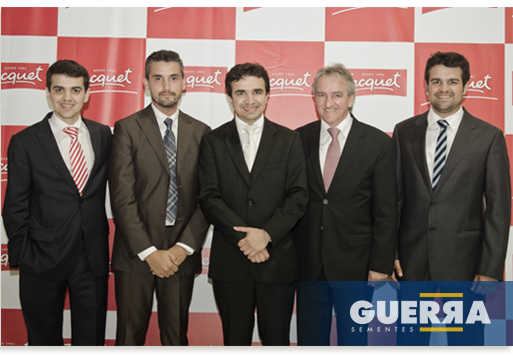
2012
Guerra family and the first CEO of Jacquet Guerra Brasil SA.
-

2013
Guerra Group is an example of a Brazilian agribusiness company in the cover story of the January issue of Globo Rural magazine.
-
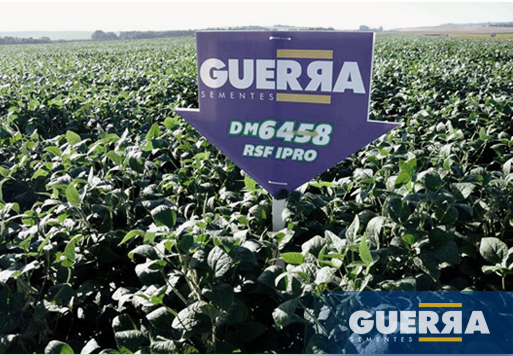
2013
In partnership with the Don Mario Group, Sementes Guerra is a pioneer in launching seeds using Intact-Monsanto technology.
-
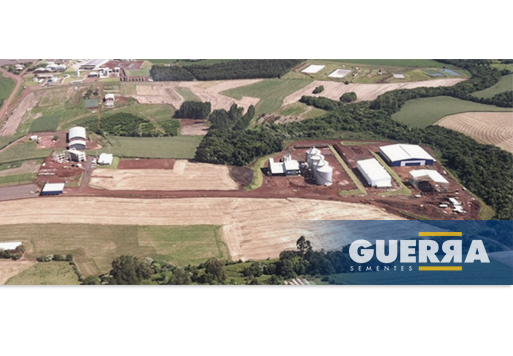
2013
Even while the Reta Grande Industrial Park is still under construction, Guerra Group moves into its new home in December.
-

2014
In February, the Reta Grande Industrial Park opens its doors to customers for the First Technology Show.
- 1885
- 1921
- 1929
- 1930
- 1954
- 1960
- 1969
- 1979
- 1979
- 1994
- 1994
- 1995
- 1995
- 1995
- 1996
- 1997
- 1997
- 1998
- 1998
- 1999
- 2000
- 2000
- 2001
- 2003
- 2003
- 2005
- 2005
- 2006
- 2006
- 2007
- 2007
- 2007
- 2007
- 2008
- 2008
- 2008
- 2008
- 2008
- 2009
- 2009
- 2009
- 2009
- 2009
- 2010
- 2010
- 2010
- 2010
- 2011
- 2011
- 2011
- 2012
- 2012
- 2012
- 2012
- 2012
- 2013
- 2013
- 2013
- 2014




